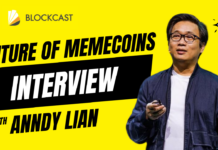Jenny: Welcome Roy, nice to see you again in Asia Blockchain Community! Please introduce yourself.
Roy: Hello, my name is Roy Li, founder of Ruffchain and a DeFi evangelist. I am an early investor of both BXH.com (DEX Swap on HECO) and Back.finance (leverage liquidity mining). I have been in DeFi business since very early when Makerdao was launched even before ICO wave. My major investments and yield-farming were from last summer.
I still remember when you said Uniswap made lots of 100x coins, I said it was a bubble. However, Uniswap did boost DeFi projects like the old ones (compound, AAVE) or new ones (yfi, curve, sushi). DeFi is super efficient in terms of solving the trust problem which is the most important part of financing. I then spent millions and millions on different DeFi projects, invest them, yield farming them, and finally help build their DAO and community.
Jenny: What is DeFi? How individual investors like us can benefit from it?
Roy: DeFi is easy to understand in terms of its financing purpose, like lending, swap, derivative, stable coin & etc. In the real-world, you can’t use your asset as collaterals to get a loan instantly because you need audits, need middlemen to handle all the paperwork, risk management and submit your credit report. In DeFi, you can do this in 3 seconds. Stake your bitcoin and get USDT instantly, that is one use case in DeFi.
There are many use cases, it helps you utilize your crypto assets. For people who need asset management, you can grow your asset on DeFi projects who people who need to trade or borrow assets. You can easily access different types of asset in different contracts in no time.
For example, in back.finance, you can earn from depositing your assets, for other people to borrow. People who need to borrow will take an interest rate and use borrowed assets together with their own assets in a ratio to start yield farming. If you only have USDT, but you want to borrow ETH from LP in a swap. All you need to handle is impermanent loss, but you doubled your assets in liquidity farming and you don’t have to hold both assets. This is another typical DeFi project.
Jenny: Tell us something about BXH, how’s it going? And why you start back.finance? What is the main objective of back.finance?
Roy: BXH is a Sushiswap/ Uniswap clone project on HECO. In HECO, the gas fee is like $0.001 per transaction while in ETH it can be $20+ easily. BXH is a swap that pays transaction fee as well as BXH token to liquidity providers. While back.finance that I just introduced, it’s a lending & leverage mining project, there is some barrier using this project, but once you get into it, you will love it.
It’s like alpha on ETH or alpaca on BSC, but better, support more tokens, more features, back.finance is to serve both lenders and borrowers. If you just want to grow your asset, you just deposit and become a lender. If you want to take IL risk for high yield, you use leverage to farm, both parties will be happy on this project.
Jenny: What are your views on the current DeFi and DEX market? Will it replace traditional finance and CEX?
Roy: In the long run they will, but they need several upgrades. The traditional finance and order booked CEX have certain advantages that need years for DeFi to catch up, like their high-frequency order making system or their ability to handle real-world assets. Maybe one day, you can just one click to use your Tesla as collateral and get $20,000. While the car is locked, you use your money for emergency purpose, and once you pay back, you can unlock your car.
Jenny: Why choose HECO instead of ETH or BSC?
Roy: BSC is more expensive, more sophisticated but HECO is young and with lots of potentials and we will see what HECO will do in no time. Currently, BXH is holding 450M $ TVL while back.finance is 300M.
Jenny: We know that you are famous in China for earning a big fortune from DeFi, tell us what projects you invested in and what are the reasons behind your decisions?
Roy: Firstly, not a big fortune, I am just lucky enough to have some good returns. I did invest DeFi projects like perp, hegic, alpha, and NFT projects like flow, chz, mana, chr.
For investment, you need to have a system, understand the logic behind any investments, and then find the right team, go for them, they will screw up 1 or 2 times, but eventually, they will succeed. lastly, keep trying, you need to believe you are doing the right thing, even if they are low. One of my friends use to have 100M theta tokens, and he sold right before the great pump.
There are many DeFi gold mines, you need to understand what their values are, where their revenue streams are from. Like Uniswap, Sushi might be easy to understand, curve somehow might be more complicated, Synthetix would be harder. But you need to know, or if other people do, you miss your opportunity.
Jenny: What do you think of NFT and Distributed Cloud Storage projects like Filecoin and Storj? Did you invest? If yes what are the reasons behind it? If not what is the reason behind it?
Roy: I have invested Arweave and Chia, but I doubt chia’s business model, however, I might have good returns, the reason behind those are based on their usage, NFT is a good way to create an image of value and make them online. Eventually, there will be lots of NFT projects other than ART or Games.
Distributed storage is complicated, storage can be useful comparing to the current POW model, but there is no clear sign which one will win. IPFS is a good protocol, but it doesn’t prove that filecoin will win this.
Jenny: What is the possible next hot concept in crypto?
Roy: Still in DeFi I’ll say, in DeFi insurance, or new lending, new AMM, probably this year you will see. As for NFT, it will be like NFTfi, NFT20 or so, discover financing attributes for NFT. BTW, layer2 is a good concept, but we need yet some time to discover it.
Jenny: What are the main criteria you are looking for on a project? How you make up your investment decisions?
Roy: Right now my focus is more on yield farming, this is the best time to grow your assets, especially when you are uncertain of which one to gamble, the market is neither bullish nor bearish, yield farming is the right choice when the market remains relatively constant.
Jenny: Totally agree! Now here comes the ABC community tradition~ Can you provide a quote or what you believe in for the readers?
Roy: I believe in DeFi, when you do financing without worrying about the trust issue.
Q&A
Isabel Lucia: In your opinion, what is the greatest value of HECO now? What marketing plans do you have for HECO in the future?
Roy: I like this one, sorry if I ignore some of you, my apologies I would get to choose 5. HECO is a fair chain for projects especially Huobi friendly developers. I can tell projects like mdex, bxh, back are much better products comparing to its clone on BSC. HECO however need time to grow, but what is better than an early-stage ecosystem? If you have faith in Huobi, betting on HECO is a good choice, btw, you have nothing to lose if you just do yield-farming. Back has a 35% yield return in USDT which is the highest on HECO.
아기상어: What is the ultimate vision that Your project is trying to achieve within the cryptocurrencies market? Obviously, the whole space will experience huge growth in the upcoming years, but what role would you like
Roy: Another good question. When we are building DeFi ecosystem, we can take Cefi as a reference, like compound is more like banking, same as aave, Uniswap, curve are like exchanges, then we do need leverage & insurance, bonds or so. Good news is they pay tokens to their early users, especially users who want to become an investor.
Like if you want to get into back/ht or bxh/usdt liquidity mining, you have 300%+ yield returns, like 1% per day, but you may lose premium by IL, so it is a bullish move. I did that in mdex, and because they just hit 5B USD TVL, they never let me down, once the bubble is over, you will see robust DeFi projects, they build solid decentralized banks or exchange, and you will feel lucky if you ever become part of the miracle.
Laurene Doran: Many projects have problems with UI / UX and this one turns off new users. How do you plan to improve the interaction with new users and with users outside the crypto space?
Roy;Unfortunately, the barrier exists, it’s hard for new users to get to know RPC switch on Metamask but eventually I believe there will be more new users coming on HECO or BSC, this is why you have high yield returns, because of the large demand.
Ora Lawrence: As You know, Many people judge a Project By $HECO price, What do you have to say to investors? What’s the plan to increase $HECO Demand?
Roy: If you are saying HT price, yes it might be undervalued, but you never know, pumping price doesn’t mean anything. BSC is doing great even without BNB pump. There are some numbers I would like to share with you. Most HECO projects have higher return with no entrance or withdrawal fee on BSC.
There is a non-loss single token yield return chart, you can see Back can be competitive in large amounts of asset management with high yield, in BSC it’s hard to find APR like this(APY is based on compounding).
BSC cost you a few dollars per interaction with the contract, HECO is much cheaper, now it is the best time to get into HECO.
Daniel Laney: While you build your project, do you take into account community feedback and demands?
Roy: Yes of course. DAO is the hardest part and soul of a project, I rate lending platforms with governance tokens more like credit union than banks. A project should let users determine parameters (like interest rates), or which pool to publish but in the early stage, the team should be responsible. If you believe in a project in a long run, you should hold tokens, instead of farm and sell.
Jenny: Thats the end of the Q & A segment. Thanks, Roy, for all the sharing today!
Roy: Thanks for supporting DeFi, BXH and BACK. I would love to return and share more insights soon.
Jenny: For more updates, visit www.blockcast.cc.





